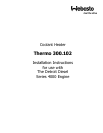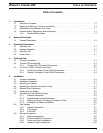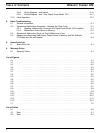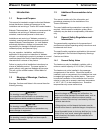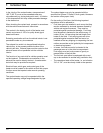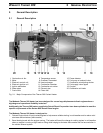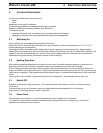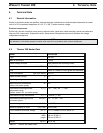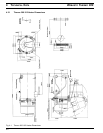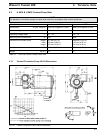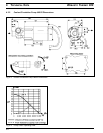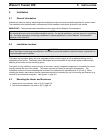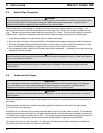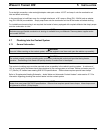
1INTRODUCTION WEBASTO THERMO 300
1-2
In the vicinity of the coolant heater, a temperature of
185 °F (85 °C) must not be exceeded under any
circumstances (e.g. during body paint work). A violation
of this temperature limit may cause permanent damage
to the electronics.
When checking the coolant level, proceed in accordance
with the vehicle manufacturer’s instructions.
The coolant in the heating circuit of the heater must
contain a minimum of 10% of a quality brand glycol
based anti-freeze.
Extracting combustion air from the vehicle interior is not
permissible under any circumstance.
The exhaust line outlet is to be positioned below the
vehicle floor, to the nearest possible location of the
vehicle’s left side. Exhaust pipes must be routed so that
exhaust fumes will not penetrate into the vehicle’s
interior.
The function of any parts vital for vehicle operation must
not be impaired. Condensation accumulation in the
exhaust line must be directly drained. A condensation
drain hole may be provided as required.
Electrical lines, switch gear, and control gear of the
heater must be located in the vehicle so that their proper
function cannot be impaired under normal operating
conditions.
The coolant heater may only be operated within the
specified operating voltage range designated by type.
The coolant heater may only be operated with the
specified fuel (Diesel 1, Diesel 2, Arctic grade, Kerosene
and certain military spec. fuels).
For the routing of fuel lines, the following important
regulations must be adhered to:
• Fuel lines are to be installed in such a way that they
remain unaffected by torsional stresses created by
vehicle and engine movement. They must be
protected against mechanical damage. Fuel lines
must be securely fastened to the vehicle every 12
inches (30 cm.) or less along the total length from
heater to fuel tank. Fuel-carrying parts are to be
protected against excessive heat and are to be
installed so that any dripping or evaporating fuel can
neither accumulate nor be ignited by hot components
or electrical equipment.
• In buses, fuel lines are not to be located in the
passenger area or in the driver’s compartment.
Fuel supply must not be by means of gravity or
pressurization of the fuel tank.
• The fuel tank must either be equipped with a vent
cap or be ventilated in another way (ventilation line).
• The operational state of the heater, i.e. an indication
“On” or “Off”, must be clearly visible to the operator.



